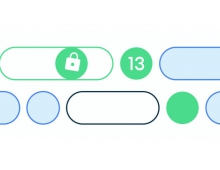
Android Dropper App Infects 45K Devices in Past 6 months
Symantec has observed a surge in detections for a malicious Android application that can hide itself from users, download additional malicious apps, and display advertisements.
The app, called Xhelper, is persistent. It is able reinstall itself after users uninstall it and is designed to stay hidden by not appearing on the system’s launcher. Symantec said that the app has infected over 45,000 devices in the past six months.
Users have been posing about Xhelper on online forums, complaining about random pop-up advertisements and how the malware keeps showing up even after they have manually uninstalled it.
Xhelper does not provide a regular user interface. The malware is an application component, meaning it won’t be listed in the device’s application launcher. This makes it easier for the malware to perform its malicious activities undercover.
Xhelper can’t be launched manually since there is no app icon visible on the launcher. Instead, the malicious app is launched by external events, such as when the compromised device is connected to or disconnected from a power supply, the device is rebooted, or an app is installed or uninstalled.
Once launched, the malware will register itself as a foreground service, lowering its chances of being killed when memory is low. For persistence, the malware restarts its service if it is stopped; a common tactic used by mobile malware.
Once Xhelper gains a foothold on the victim’s device, it begins executing its core malicious functionality by decrypting to memory the malicious payload embedded in its package. The malicious payload then connects to the attacker’s command and control (C&C) server and waits for commands. To prevent this communication from being intercepted, SSL certificate pinning is used for all communication between the victim’s device and the C&C server.
Upon successful connection to the C&C server, additional payloads such as droppers, clickers, and rootkits, may be downloaded to the compromised device. "We believe the pool of malware stored on the C&C server to be vast and varied in functionality, giving the attacker multiple options, including data theft or even complete takeover of the device," Symantec's Software Engineers said.
Xhelper apps first appeared in March 2019. Back then, the malware’s code was relatively simple, and its main function was visiting advertisement pages for monetization purposes. The code has changed over time. Initially, the malware’s ability to connect to a C&C server was written directly into the malware itself, but later this functionality was moved to an encrypted payload, in an attempt to evade signature detection. Some older variants included empty classes that were not implemented at the time, but the functionality is now fully enabled.
None of the samples that Symantec analyzed were available on the Google Play Store, and while it is possible that the Xhelper malware is downloaded by users from unknown sources, Symantec believes that may not be the only channel of distribution.
Symantec didn't name any phone brands that might be connected to xHelper, but many commenters on Reddit and on Google Play support forums mentioned that they had cheap Chinese-brand phones.
The names tossed around included Coolpad, Doogee, Hurricane Mobile, Jivi, Micromax, Mobell and Tecno, although some better-regarded brands were also mentioned.
The attackers may be focusing on specific brands. However, Symantec believes it to be unlikely that Xhelper comes preinstalled on devices given that these apps don’t have any indication of being system apps. In addition, numerous users have been complaining on forums about the persistent presence of this malware on their devices, despite performing factory resets and manually uninstalling it. Since it is unlikely that the apps are systems apps, this suggests that another malicious system app is persistently downloading the malware, which is something Symantec is currently investigating.
The malware mostly affects users in India, the U.S. and Russia.
Symantec advises users to take the following precautions:
- Keep your software up to date.
- Do not download apps from unfamiliar sites.
- Only install apps from trusted sources.
- Pay close attention to the permissions requested by apps.
- Install a suitable mobile security app.
- Make frequent backups of important data.





















